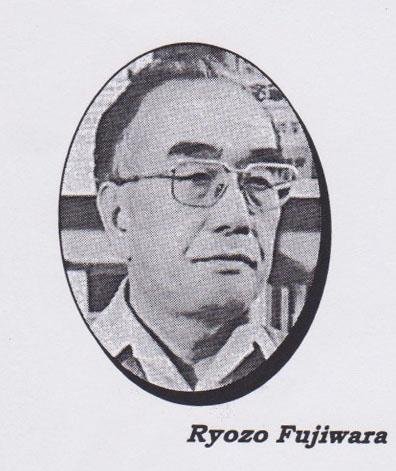In celebration Of Beijyu

Karate-do
May 3, 2021
WKF Competition Rules
May 3, 2021In celebration Of Beijyu
(88th Birthday of Gima Makato)
By Ryozo Fujiwara, 1984
The ancestors of Master Gima date back to Shinbu Oshiro,
Lord of Oshiro Castle Nakayama Kingdom in the era (1355-95). Shinshu Oshiro of the 2nd generation moved to Gima village of Kakibana, and the name Gima came in the 3rd
generation when Shinfuku became the Manor Lord of Gima Village. Shinmo and Shinmei
Of the 4th generation and the 5th generation respectively were also manor Lords of the village.
Starting with Shinjo of the 6th generation, the position Of “Magistrate of the Land” began to be held concurrently. In today’s terms “magistrate of the land” corresponds roughly to the “minister of Agriculture”.Shinjo brought cotton plants from Kagoshima and successfully cultivated them in Okinawa.Then, he instroduced techniques to make textiles.
Shinjo of the 6th generation was also famous by introducing sweet potatoes (satuma-Imo) in Okinawa. Sweet potatoes were cultivated in Okinawa about 80 years before Kagoshima started to cultivated in Okinawa about 80 years before Kagoshima started to cultivate them. One version says that King Shotei, of the 11th generation of Okinawa Kingdom, sent, in 1968,a basket of sweet potato seeds to Kagoshima. Another version says that 7 years later (1705), while visiting Okinawa some high officials went to the frontier village and brought back to Kagoshima some sweet potato seeds. They then managed to transplant them with success. In any case, Shinjo Gima, through his efforts, is viewed as the originator of the cultivation of sweet potatoes in Okinawa.
The production of brown sugar also counts among the great achievements of shinjo Gima. In the year 1623, shinjo Gima sent some talented young men to Fujeng, China, to learn the secrets of making brown sugar form sugar cane. This technique was introduced to Jima Village and, from there, to the rest of Okinawa. The improvement of agriculture in Okinawa can be attribute in great part to the insights and hard work of the venerable Shinjo Gima.
Shinkin (Makoto) Gima is a direct descendant (of the eldest male line) of Shinjo.He was born on September 28, 1896 in Naha City. Okinawa to a house of Scholars of Chinese Classics. In the Gima family, education has always been encouraged and strong. This goes back to when Shinto Gima was a top disciple of a holy priest Taichu, a Buddhist monk of a jodo sect. This monk was famous for writing “Ryukyu Shindo” and “Ryukyu Diary”. The Buddhist monk studied and mastered Zen at Zojo-ji temple in Tokyo, and under him, Shinjo Gima studied the precept of Zen and the three Sutras. When he Left Okinawa for Tokyo, the priest Taichu gave to Shinto Gima the honorific title of “Juryo Tokko”.
When Mr.Gima was a young child, He was very frail, had many stomach aches, and often caught colds. When he entered the Okinawa Shihan Gakko (teacher’ college), he undertook karate training under masters A.Itosu (1830-1914) and K.yabu (1868-1951).Soon, he started getting stronger and healthier. By the time he graduated, he was a young man at above average strength and size. Being confident of his health and interested studying more, he decided to enter Tokyo Shoka Daigaku (presently Hitotsubashi University). At the time the distance between Naha and Tokyo was very great and something difficult to imagine in our days, but his burning ambition made that distance seems like a shouting distance.
In May 1922, a year before Gima’s graduation at the Kodokan (Judo head Dojo), the first public demonstration of karate was held in front of more than 300 members. The demonstration was given by master Gichin Funakoshi (1870-1957) and Gima under the promotion of Grand Judo master Jigoro Kano (1860-1938). The curtain of the dawn of the modern karate was raised for the first time at this event. The guidance of masters A. Itosu’s and K.Yabu always was “the form of Karate starts with Naihanchi ( Tekki) and ends with Naihanchi”. Shihan M.Gima followed that instruction and became a famous practitioner of the karate world’s number one technique and training discipline Naihanchi.
After he graduated from University, Gima employed at the Kumamoto Commercial School, Maebashi commercial School, Kofu Commercial School and Yamagata Commercial School in which he was the principal when world war II ended. He continued to train in karate while also training in Judo. In the year 1944, he was given Judo Godan (5th degree black belt) by master Jiro Nango ,head of the second generation of the kodokan.He was , a nephew of master J.Kano, and was a real admiral at the time but when he was a captain he commanded the warship (battleship) katori. The successor of captain J. Nango was Captain K. Kanna from Okinawa.
In the year 1921, the crown prince (Late Emperor Hirohito) went to Europe on the ship Katori. On the way, when the ship stopped at Naha, master G. Funskoshi had the students of Okinawa Shihan Gakko Perform Kushanku (Kanku) and Naihanchi (Tekki) for the Crown Prince in front of Shuri Castle. The demonstration had crucial impact on master G. Funakoshi’s decision to go to Tokyo.
These two admirals who had so much to do with the development of modern karate were also top graduates of the naval academy. However they had their naval careers cut short by the post-war reduction of military forces when they were transferred to the reserves.After retirement Admiral J.Kanna became a member of Parliament, and admiral J.Nango succeeded to the leadership of the kodokan in 1938. Shihan M.Gima left the world of Education after the war joined the kajima Corporation Company as an advisor.
Most of the important documents of the compahttp://gima-ha.in/wp-admin/admin.php?page=youtube-my-preferencesny are written by him. In his younger years, he learned Calligraphy from Rokkaku-ryu Shihan S.kondo and a famous calligrapher with the pen-name “Kakuju”. In fact more than ten years ago, I asked for a piece of his calligraphy. I had it framed in my office. When I am tired at work, I took at his spiritually refreshing Calligraphy.
In honour of Shihan M. Gima’s 88th birthday I said a little about his ancestors. I also look into the future and hope that he will be around for many more years to guide the further development of karate. His ancestors lived a long life with Shinfuku 85, Shinmei 83, and Shinjo 88. These ancestors were all from eras of short life expectancy, it is most likely that Gima will live to his Hakuju (99th birthday)




